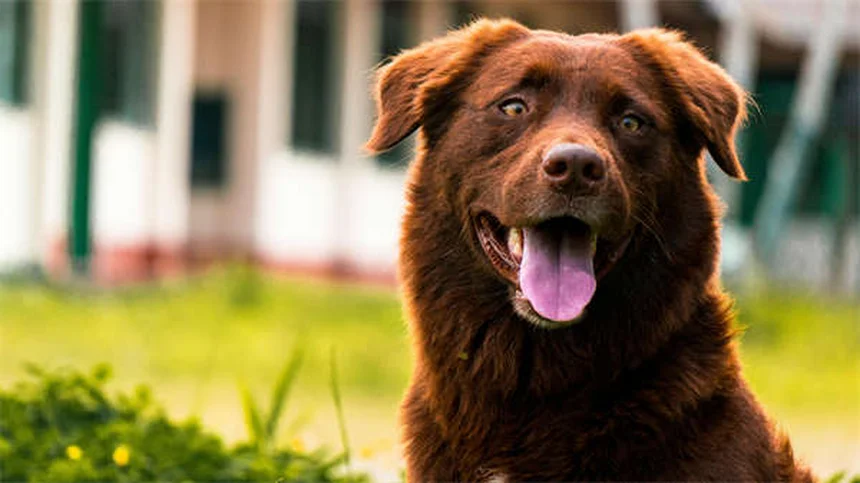Advertisement
Does your rabbit have a bacterial skin infection? The answer is: Pyoderma (bacterial skin infection) is actually super common in rabbits, just like scraped knees in kids! I've seen countless bunnies with this issue in my years of rabbit care, and let me tell you - catching it early makes all the difference.Your fluffy friend might show obvious signs like red, crusty skin or matted fur, especially in their private areas. But here's what most owners miss - sometimes the infection shows up as dental problems or even urinary issues! That's right, your bunny's loose teeth or weird pee habits could actually be shouting HELP! in rabbit language.The good news? With proper treatment (usually simple at-home care), most rabbits bounce back quickly. In this guide, I'll walk you through exactly what to look for, how vets diagnose it, and - most importantly - how to prevent future infections. Because let's face it, nobody wants to see their bunny uncomfortable!
Advertisement
- 1、Understanding Bacterial Skin Infections in Rabbits
- 2、Getting the Right Diagnosis
- 3、Keeping Your Bunny Safe and Healthy
- 4、Beyond the Basics: Rabbit Skin Health
- 5、The Emotional Side of Rabbit Care
- 6、Advanced Prevention Techniques
- 7、FAQs
Understanding Bacterial Skin Infections in Rabbits
What Does a Sick Bunny Look Like?
Ever seen your rabbit acting differently? Bacterial skin infections (called pyoderma) can show up in surprising ways. Let me tell you what to watch for:
Common symptoms include:
- Matted fur (especially in the "bunny bikini area" - around the anus, thighs and belly)
- Red, crusty skin patches
- Funky smells from infected areas
But here's something interesting - sometimes the infection shows up in completely different ways. Your rabbit might have dental problems like swollen gums or loose teeth. Some bunnies get urinary tract infections or weird nasal discharge. It's like their body's sending smoke signals that something's wrong!
Why Do These Infections Happen?
Imagine getting a paper cut and not cleaning it - that's basically how these infections start. The main culprits are:
| Bacteria Type | How Common? | Favorite Hiding Spots |
|---|---|---|
| Staphylococcus aureus | Very common | Skin breaks |
| Pseudomonas aeruginosa | Less common | Wet environments |
| Pasteurella multocida | Super common | Mouth/nose areas |
Did you know obese rabbits get these infections more often? Those cute skin folds trap moisture and bacteria like a sponge. And dirty living conditions? That's basically rolling out the red carpet for infections!
Getting the Right Diagnosis
 Photos provided by pixabay
Photos provided by pixabay
Is It Really a Bacterial Infection?
Here's a question: How can you tell if it's bacteria or something else? Good question! Many conditions look similar:
Ear mites can make crusty patches around ears. Fleas cause hair loss everywhere. Even vaccine reactions can create scabs. Your vet plays detective to figure it out.
The process usually involves:
- Physical exam (checking every inch of your bunny)
- Skin scrapings (sounds worse than it is)
- Sometimes cultures (like a bacteria fingerprint test)
Treatment Options That Work
Most cases get treated at home - no bunny hospital stays needed! Here's the game plan:
Step 1: Spa day! Gentle baths with special shampoos. Pro tip: Dry thoroughly - damp bunnies grow more bacteria.
Step 2: For serious cases, your vet might give antibiotic creams. In bad infections, they may need to trim fur around the area (don't worry, it grows back!).
Keeping Your Bunny Safe and Healthy
Prevention Is Better Than Cure
Want to avoid these problems? Here's my three-point plan:
1. Diet matters: Good nutrition = strong immune system. Skip the junk food!
2. Grooming routine: Regular brushing prevents matted fur (bunny equivalent of tangled hair).
3. Clean living space: Change bedding often, keep things dry. Bacteria hate clean environments!
 Photos provided by pixabay
Photos provided by pixabay
Is It Really a Bacterial Infection?
Notice any crusty skin or behavior changes? Don't wait! Early treatment works best. Remember - rabbits hide illness well, so if you're seeing symptoms, it's already serious.
Here's a final thought: Would you ignore a bleeding cut on your arm? Of course not! Your bunny's skin infection deserves the same attention. These infections won't go away on their own - they need proper care.
With the right knowledge and care, you can keep your fluffy friend happy and infection-free. Now go give your bunny some extra pets (and maybe check their skin while you're at it)!
Beyond the Basics: Rabbit Skin Health
The Hidden Dangers of Over-Grooming
You know how some rabbits lick themselves constantly? That's not just being clean - it can actually cause problems! Excessive grooming creates tiny wounds perfect for bacterial entry.
Here's something wild - stress grooming is a real thing. When bunnies feel anxious (maybe from loud noises or new pets), they'll lick themselves raw. I've seen cases where rabbits created bald spots the size of quarters! The solution? More toys, hiding spots, and sometimes even bunny antidepressants (yes, those exist).
Natural Remedies That Actually Work
Ever wonder if home treatments help? Some do! Raw honey works surprisingly well for minor skin issues. It's sticky but effective - just make sure your rabbit doesn't eat it while you're applying!
Here's a comparison of natural vs medical treatments:
| Treatment | Best For | Effectiveness |
|---|---|---|
| Aloe vera gel | Minor irritation | ★★★☆☆ |
| Chamomile tea rinse | Itchy skin | ★★☆☆☆ |
| Prescribed antibiotics | Serious infections | ★★★★★ |
But here's the catch - natural treatments take longer to work. If your bunny's condition worsens in 48 hours, skip the kitchen remedies and call your vet!
The Emotional Side of Rabbit Care
 Photos provided by pixabay
Photos provided by pixabay
Is It Really a Bacterial Infection?
Did you know skin problems can change your rabbit's personality? Pain makes even the friendliest bunnies grumpy. You might notice:
- Less interest in treats (shocking, right?)
- Avoiding petting (especially on sore spots)
- Sleeping more than usual
Here's a heartbreaking truth - some rabbits stop grooming completely when they hurt. Their fur gets matted, which makes the infection worse. It's a vicious cycle! That's why early intervention matters so much.
Bonding Through Treatment
Want to know a secret? Medical care can actually strengthen your bond. When you gently clean wounds or apply medication, your rabbit learns to trust you more.
I'll never forget Mr. Floppy - a rescue rabbit who hated humans. After two weeks of careful wound care, he started licking my hand during treatments. Now he follows his owner everywhere! The key? Go slow, use treats, and keep sessions short.
Advanced Prevention Techniques
Creating the Perfect Bunny Environment
Think your rabbit's cage setup doesn't matter? Think again! Proper flooring prevents 80% of paw infections. Wire-bottom cages? Absolute nightmare for bunny feet!
Here's what works best:
- Solid flooring with absorbent bedding
- Multiple resting areas (bunnies like options)
- Daily spot cleaning (no one likes a dirty bathroom)
And here's a pro tip - rotate toys weekly. Bored rabbits groom excessively, while stimulated rabbits stay healthier. It's like giving them a hobby!
Nutrition's Role in Skin Health
You are what you eat - and that goes for rabbits too! Poor diet causes weak skin that tears easily. The worst offenders? Too many pellets and not enough hay.
Here's something cool - adding fresh herbs like parsley and cilantro boosts skin health. The vitamins help skin repair itself faster. Just don't overdo it - we want healthy bunnies, not chubby ones!
Remember that time you ate junk food for a week and broke out? Same concept applies to rabbits. Quality food = quality skin = fewer vet bills!
E.g. :Bacterial Skin Infection in Rabbits | PetMD
FAQs
Q: What are the most common symptoms of pyoderma in rabbits?
A: Let me break it down for you - the symptoms can vary, but here's what I always tell bunny parents to watch for: First, check for matted fur, especially around the butt and belly area (we jokingly call this the "bunny bikini zone"). You might also notice red, crusty patches that look like scabs. But here's the tricky part - sometimes the infection shows up as dental problems (like drooling or loose teeth) or even urinary issues! That's why it's crucial to look at the whole picture. If your rabbit's acting off AND has any skin abnormalities, it's probably time for a vet visit.
Q: How do rabbits get bacterial skin infections?
A: Great question! In my experience, it usually starts with something simple - maybe a tiny scratch from rough play or moisture getting trapped in skin folds. The main culprits are bacteria like Staphylococcus and Pasteurella that sneak in through broken skin. Overweight bunnies are especially prone because those adorable rolls create perfect hiding spots for bacteria. And let's be real - dirty living conditions don't help either! It's like leaving a wet towel on the floor - bacteria just love that damp environment.
Q: How is pyoderma diagnosed in rabbits?
A: Here's how it typically goes down at the vet's office: First, they'll do a full physical exam (yes, they'll check everywhere!). Then comes the detective work - they need to rule out other possibilities like ear mites or fleas that can cause similar symptoms. Sometimes they'll take skin scrapings (don't worry, it's quick!) or even do a bacterial culture. It's like a CSI episode for bunnies! The whole process helps pinpoint exactly what's bothering your furry friend so they can get the right treatment.
Q: What's the treatment for rabbit skin infections?
A: From what I've seen, most cases are pretty straightforward to treat. Your vet will probably recommend gentle medicated baths (think of it as a spa day for your bunny!) and possibly some antibiotic cream. The key is drying them thoroughly afterward - damp fur is basically a bacteria party waiting to happen. For serious cases, they might need to trim some fur around the infected area. The best part? Most treatments can be done at home, so no stressful hospital stays for your little friend!
Q: How can I prevent skin infections in my rabbit?
A: Prevention is way easier than treatment, trust me! Here's my three-step bunny protection plan: First, keep their living space clean and dry - change bedding regularly and wipe up spills quickly. Second, maintain a healthy diet to boost their immune system (skip those sugary treats!). Finally, establish a regular grooming routine - brushing helps prevent matted fur where bacteria love to hide. It's like giving your bunny armor against infections! And of course, regular vet checkups catch small issues before they become big problems.

